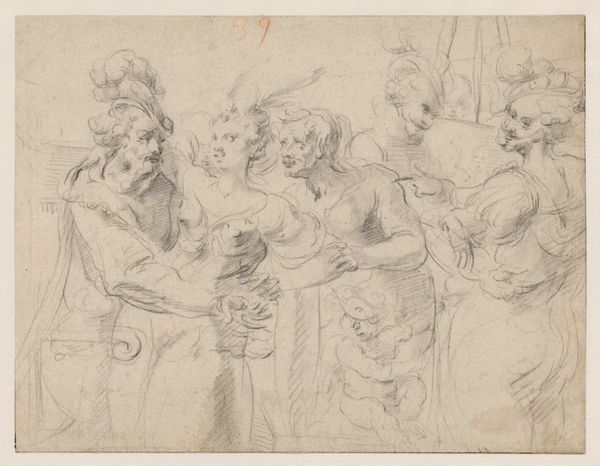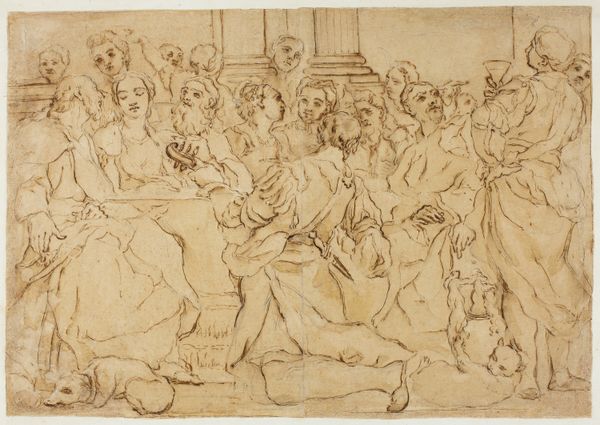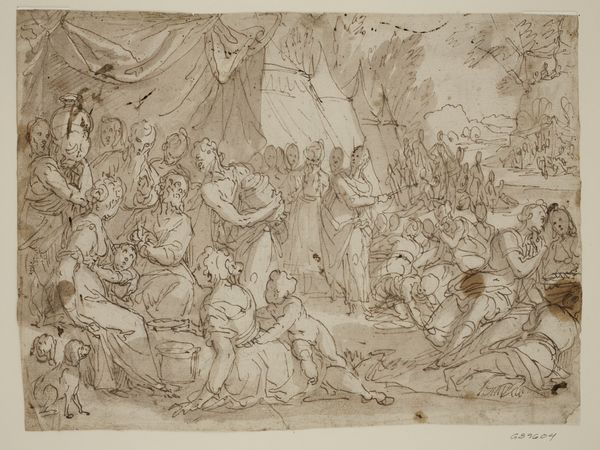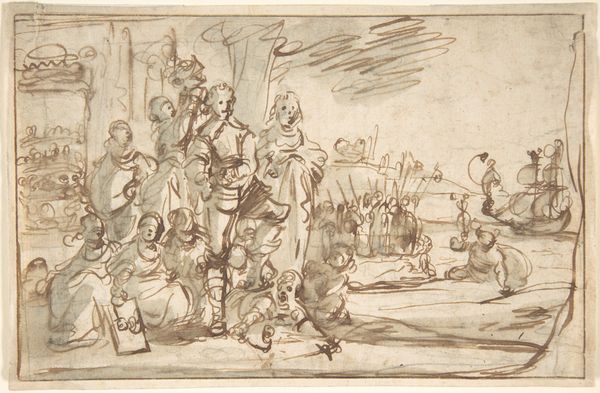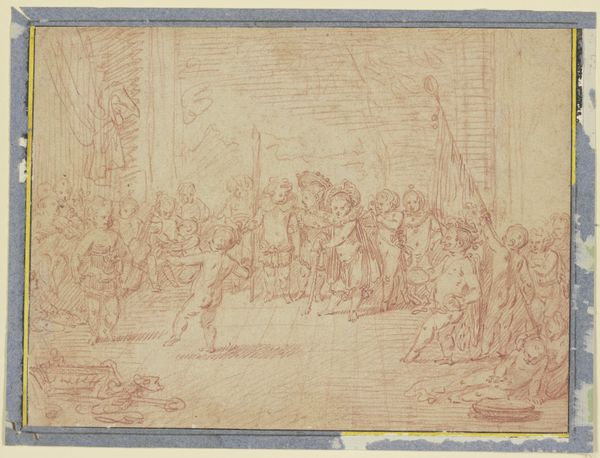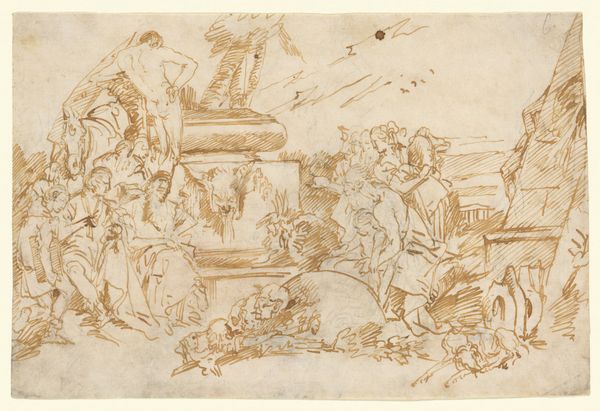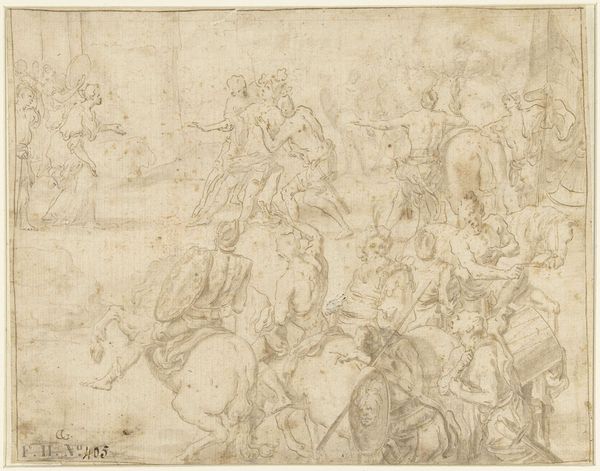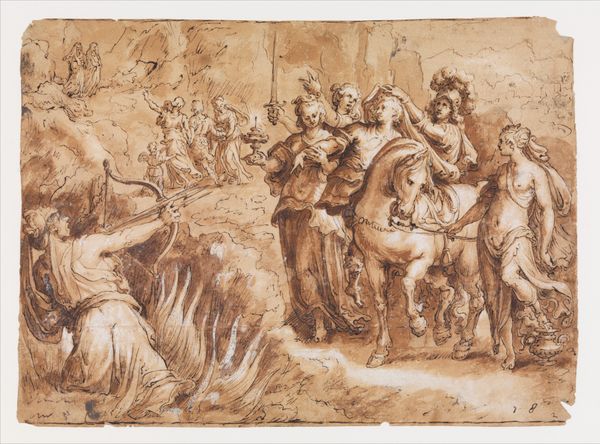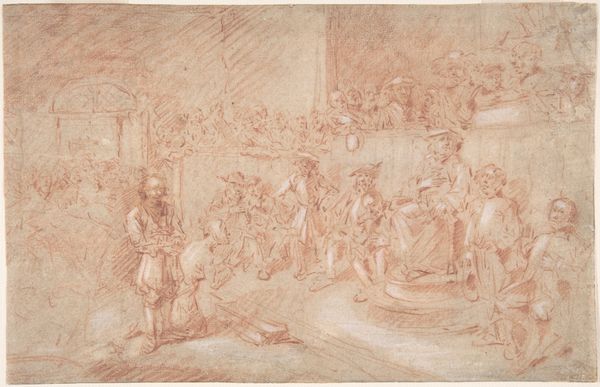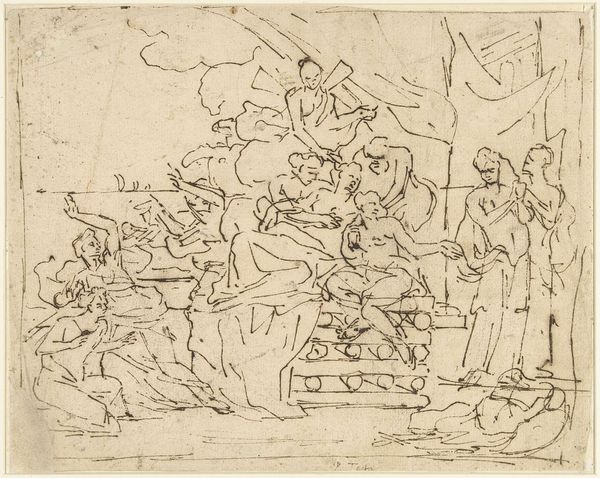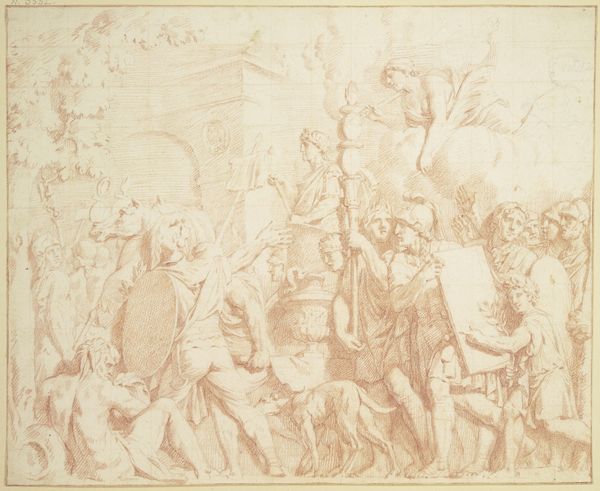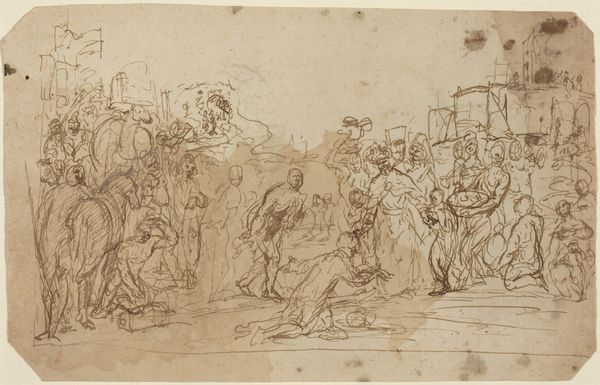
drawing, print
#
portrait
#
drawing
#
baroque
# print
#
figuration
#
group-portraits
Dimensions: 9 1/16 x 13 13/16 in. (23 x 35.1 cm)
Copyright: Public Domain
Curator: This drawing, entitled "Recto: The Concert; Verso: Seated Male Nude," attributed to Johann Liss, likely dates from sometime between 1600 and 1631. It's a glimpse into Baroque figuration rendered with what appears to be graphite. What catches your eye first? Editor: Immediately, the flowing, almost frantic lines. There's a Dionysian revelry suggested here, even in the monochrome sketch. The faces tilted skyward, the goblet raised high—it speaks of abandon. Curator: Yes, and in the context of Liss's career, which saw him working across the Netherlands and Italy, such festive imagery was extremely popular. He had been absorbing influences from diverse sources and cultures. Do you feel that iconography reflects any particular social standing? Editor: Certainly. There's a certain...carelessness suggested, if that makes sense. A life free from the demands of labor. Music, wine, ornate clothing—all signifiers of privilege. Even the style, which leans towards Baroque drama, conveys opulence and spectacle. The cup becomes a Chalice representing more than simple celebration, even representing a state religion that caters to power. Curator: Indeed. And notice how the gathering is arranged? The composition implies an intentional construction of an ideal; the concert becoming a theatre of leisure. One can argue it underscores social divisions just as much as celebratory unity, presenting us with a highly controlled image intended for a very select audience. The role of the artist cannot be separated from those class issues. Editor: It brings forth such contrasts. Despite being a simple drawing on paper, Liss manages to invoke that period’s aspirations towards ecstasy. There's a tension between the uninhibited spirit of the scene and the undeniable indicators of class. The Baroque impulse is not just ornamentation, but an active process of social messaging. Curator: A perfect encapsulation, I think. An artifact of culture that echoes how art always dances at the intersections of pleasure, display, and perhaps, also social politics. Editor: The more you consider these themes, the more Johann Liss's simple sketch resonates deeply.
Comments
No comments
Be the first to comment and join the conversation on the ultimate creative platform.
